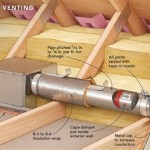Repairing a Bathroom Sink Wall: A Comprehensive Guide
Water damage in a bathroom, particularly around the sink, can lead to significant wall damage if not addressed promptly. Repairing a bathroom sink wall requires a systematic approach, involving diagnosis of the problem, preparation of the area, execution of the repair, and preventative measures to avoid future occurrences. This article provides a detailed examination of each stage, offering guidance on materials, techniques, and potential challenges.
Identifying the Cause and Extent of the Damage
Before commencing any repair work, accurately identifying the source and extent of the damage is crucial. Water damage often stems from leaky pipes, faulty faucets, overflowing sinks, or inadequate sealing around the sink basin. Start by thoroughly inspecting the area around the sink, looking for visible signs of water damage such as discoloration, blistering paint, bubbling wallpaper, or soft spots in the wall.
Carefully examine the plumbing connections under the sink. Check the supply lines, drainpipe, and P-trap for leaks. Even a small, slow drip can cause significant damage over time. Tighten any loose connections using a wrench, ensuring not to overtighten and damage the fittings. If tightening doesn't resolve the leak, consider replacing the worn-out parts. The sink basin's seal against the countertop must also be examined. If the sealant is cracked or missing, water will seep into the wall when the sink is in use.
To assess the extent of the wall damage, gently probe the affected area with a screwdriver or similar tool. If the drywall or plasterboard is soft and easily penetrates, it indicates significant water saturation and potential rot. Depending on the severity, the damaged section may need to be removed and replaced entirely. In cases of extensive damage, it may be necessary to engage a professional to ensure the structural integrity of the wall.
Preparing the Area for Repair
Once the cause and extent of the damage have been determined, the next step is to prepare the area for repair. This involves removing any damaged materials, cleaning the surrounding area, and ensuring the area is dry before proceeding with the repair work.
Begin by turning off the water supply to the sink. This will prevent any further water damage during the repair process. Place a bucket under the pipes to catch any residual water. Remove any accessories, such as mirrors, towel racks, or shelves, that may obstruct access to the damaged area. Protect the surrounding surfaces with drop cloths or plastic sheeting to prevent further damage from dust and debris.
Using a utility knife, carefully score around the perimeter of the damaged drywall or plasterboard. This will help to prevent the paint or wallpaper from peeling away when the damaged section is removed. Use a pry bar or drywall saw to carefully remove the damaged section, taking care not to damage the surrounding wall. Dispose of the damaged material responsibly.
Once the damaged material has been removed, inspect the exposed studs and framing for any signs of rot or mold. If rot or mold is present, it must be treated before proceeding with the repair. Apply a mold-killing solution to the affected area and allow it to dry completely. If the studs are severely damaged, they may need to be replaced. Use a wire brush to remove any loose debris from the surrounding area. Vacuum the area thoroughly to remove any dust and particles. Allow the area to dry completely before proceeding with the repair. This may require the use of a dehumidifier or fan to expedite the drying process.
Executing the Wall Repair
After properly preparing the area, the actual repair work can begin. This typically involves replacing the damaged drywall or plasterboard, applying joint compound, sanding the surface, and priming and painting the repaired area.
Measure the opening where the damaged section was removed. Cut a new piece of drywall or plasterboard to the exact size of the opening. Ensure the new piece fits snugly into the opening. Apply construction adhesive to the exposed studs and framing. Carefully position the new piece of drywall or plasterboard into the opening and press it firmly against the framing. Secure the new piece to the framing using drywall screws, spaced approximately 6-8 inches apart. Ensure the screws are driven in deep enough to dimple the surface of the drywall, but not so deep that they tear the paper facing.
Apply drywall tape over the seams where the new piece meets the existing wall. This will help to create a smooth, seamless surface. Use a putty knife to apply a thin, even coat of joint compound over the drywall tape. Allow the joint compound to dry completely. Apply a second coat of joint compound, feathering the edges to blend the repair with the surrounding wall. Allow the second coat to dry completely.
Once the joint compound is completely dry, sand the surface smooth using fine-grit sandpaper. Be careful not to sand too aggressively, as this can damage the surrounding wall. Wipe away any dust with a damp cloth. Apply a coat of primer to the repaired area. This will help to seal the surface and provide a better surface for the paint to adhere to. Allow the primer to dry completely. Apply two coats of paint to the repaired area, matching the color of the surrounding wall. Allow each coat to dry completely. Ensure adequate ventilation during the painting process.
Preventative Measures and Long-Term Maintenance
After completing the wall repair, it is important to take preventative measures to avoid future water damage. Regular maintenance and prompt attention to potential problems can significantly reduce the risk of recurring issues.
Regularly inspect the plumbing connections under the sink for leaks. Tighten any loose connections immediately. Replace any worn-out or damaged parts as needed. Ensure the sink basin is properly sealed against the countertop. Inspect the sealant regularly and reapply if necessary. Keep the area around the sink clean and dry. Wipe up any spills or splashes immediately. Avoid placing excessive weight on the sink basin, as this can damage the seal. Ensure adequate ventilation in the bathroom to prevent moisture buildup. Consider installing a bathroom fan if one is not already present. Use the fan during and after showers or baths to help remove excess moisture from the air.
Consider using water-resistant paint in the bathroom, especially in areas prone to moisture. This type of paint resists water damage and can be easily cleaned. Educate household members about the importance of reporting any leaks or water damage promptly. Early detection and repair can prevent minor problems from escalating into major issues. Consider installing a water leak detector near the sink to alert you to any leaks early on. These devices can provide an early warning, minimizing potential damage. Schedule regular professional plumbing inspections to identify and address any potential problems before they cause significant damage. A professional plumber can identify hidden leaks or other issues that may not be readily apparent.
Addressing wall damage in a bathroom sink area requires careful attention to detail and a systematic approach. By understanding the causes of the damage, properly preparing the area, executing the repair effectively, and implementing preventative measures, it is possible to restore the wall and prevent future problems. Consistent maintenance and prompt attention to potential issues will contribute to a long-lasting and problem-free bathroom environment. Choosing high-quality materials and following proper techniques are essential for a durable and aesthetically pleasing repair. If the damage is extensive or you are uncomfortable performing the repair yourself, consider hiring a qualified professional to ensure the job is done correctly.

Bathroom Sink Repair What You Need To Know In 2024

A Quick And Dirty Bathroom Water Damage Repair Thumb Hammer

Wall Mounted Sink New Life Jaime Costiglio

Wall Hung Bathroom Sink Repair How To Plumbing

Kitchen Sink Sticker Roll Self Adhesive Repair Tape Bathroom Wall Sealing Strip
A Quick And Dirty Bathroom Water Damage Repair Thumb Hammer
How To Repair A Sink Ripped Out The Wall Diy Home Improvement Forum

What To Do When Your Sink Breaks Stack Plumbing Blog

Bathroom Sink Drain Leak Not Sure How To Fix Doityourself Com Community Forums

How To Fix A Wobbly Sink Pedestal Ehow
Related Posts







